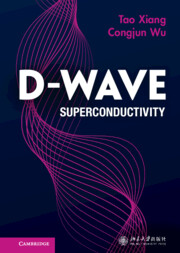Book contents
- Frontmatter
- Contents
- Preface
- Abbreviations
- 1 Introduction to Superconductivity
- 2 Microscopic Models for High Temperature Superconductors
- 3 Basic Properties of d-wave Superconductors
- 4 Quasiparticle Excitation Spectra
- 5 Tunneling Effect
- 6 Josephson Effect
- 7 Single Impurity Scattering
- 8 Many-Impurity Scattering
- 9 Superfluid Response
- 10 Optical and Thermal Conductivities
- 11 Raman Spectroscopy
- 12 Nuclear Magnetic Resonance
- 13 Neutron Scattering Spectroscopy
- 14 Mixed State
- Appendix A Bogoliubov Transformation
- Appendix B Hohenberg Theorem
- Appendix C Degenerate Perturbation Theory
- Appendix D Anderson Theorem
- Appendix E Sommerfeld Expansion
- Appendix F Single-Particle Green’s Function
- Appendix G Linear Response Theory
- References
- Index
6 - Josephson Effect
Published online by Cambridge University Press: 17 June 2022
- Frontmatter
- Contents
- Preface
- Abbreviations
- 1 Introduction to Superconductivity
- 2 Microscopic Models for High Temperature Superconductors
- 3 Basic Properties of d-wave Superconductors
- 4 Quasiparticle Excitation Spectra
- 5 Tunneling Effect
- 6 Josephson Effect
- 7 Single Impurity Scattering
- 8 Many-Impurity Scattering
- 9 Superfluid Response
- 10 Optical and Thermal Conductivities
- 11 Raman Spectroscopy
- 12 Nuclear Magnetic Resonance
- 13 Neutron Scattering Spectroscopy
- 14 Mixed State
- Appendix A Bogoliubov Transformation
- Appendix B Hohenberg Theorem
- Appendix C Degenerate Perturbation Theory
- Appendix D Anderson Theorem
- Appendix E Sommerfeld Expansion
- Appendix F Single-Particle Green’s Function
- Appendix G Linear Response Theory
- References
- Index
Summary
Chapter 6 studies the Josephson tunneling effect in a superconductor-insulator-superconductor junction. The d-wave energy gap gives rise to a geometry dependent phase factor in the tunneling current. This leads to a unique phase-sensitive tool for experimentally detecting the d-wave pairing symmetry through a corner-sharing or tri-crystal junction. It is this kind of measurement that yields the strongest evidence for identifying the pairing symmetry in cuprate superconductors. The paramagnetic Meissner effect is discussed at the end of the chapter.
- Type
- Chapter
- Information
- D-wave Superconductivity , pp. 139 - 157Publisher: Cambridge University PressPrint publication year: 2022

